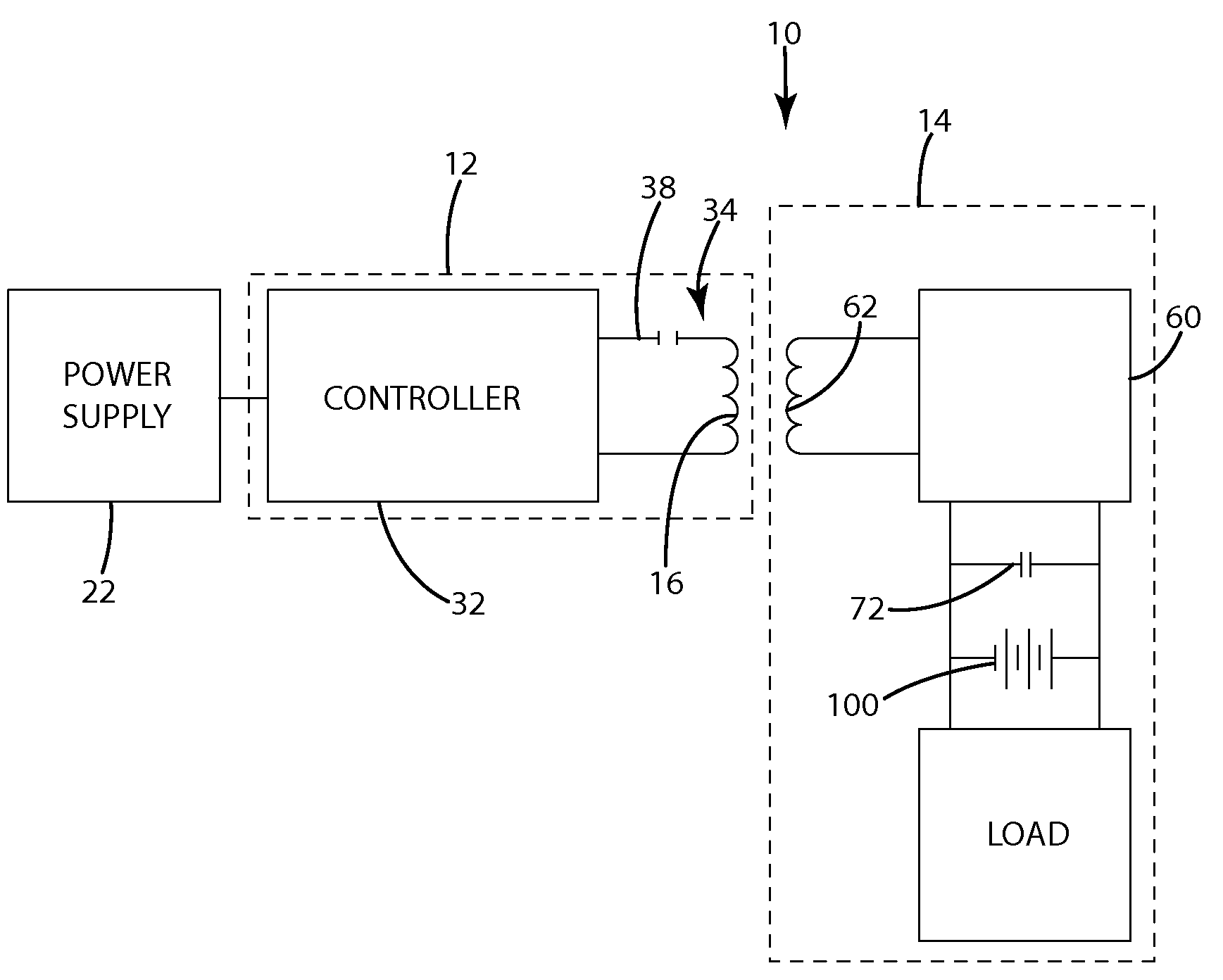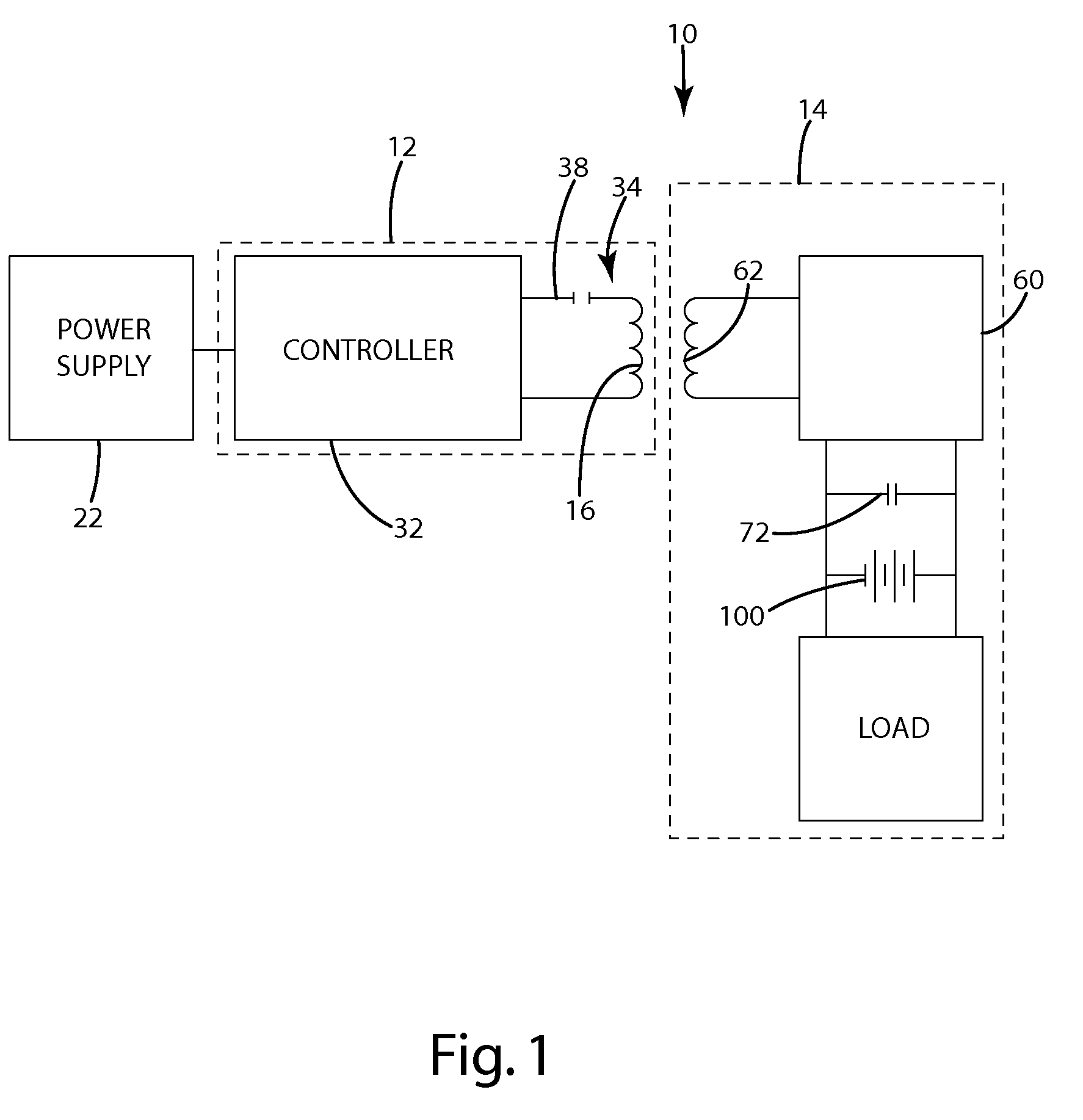Wireless charging system
a charging system and wireless technology, applied in the field of wireless power supply systems, can solve the problems of increasing concerns about the problems associated with conventional battery chargers, unfavorable operation, and unsightly cords of conventional corded battery chargers, and achieve the effects of reducing the number of wires
- Summary
- Abstract
- Description
- Claims
- Application Information
AI Technical Summary
Benefits of technology
Problems solved by technology
Method used
Image
Examples
Embodiment Construction
[0029]I. Overview.
[0030]A remote control system 10 having an inductive charging system in accordance with an embodiment of the present invention is shown in FIG. 1. The system generally includes an inductive power supply 12 and a battery-operated remote control 14. The inductive power supply 12 generates an electromagnetic field capable of wirelessly transmitting power to the remote control 14. The remote control 14 includes a secondary power supply circuit 60 capable of receiving power and delivering it in a usable form when in the presence of an appropriate electromagnetic field. The power induced in the secondary circuit 60 is rapidly stored in a charge storage capacitor 72. The power stored in the charge storage capacitor 72 is used to charge the battery 100 over an extended timeframe suitable for battery charging. Accordingly, power can be quickly stored in the charge storage capacitor 72 and used to continue to charge the battery 100 even after the remote control 14 is removed...
PUM
 Login to View More
Login to View More Abstract
Description
Claims
Application Information
 Login to View More
Login to View More - R&D
- Intellectual Property
- Life Sciences
- Materials
- Tech Scout
- Unparalleled Data Quality
- Higher Quality Content
- 60% Fewer Hallucinations
Browse by: Latest US Patents, China's latest patents, Technical Efficacy Thesaurus, Application Domain, Technology Topic, Popular Technical Reports.
© 2025 PatSnap. All rights reserved.Legal|Privacy policy|Modern Slavery Act Transparency Statement|Sitemap|About US| Contact US: help@patsnap.com



